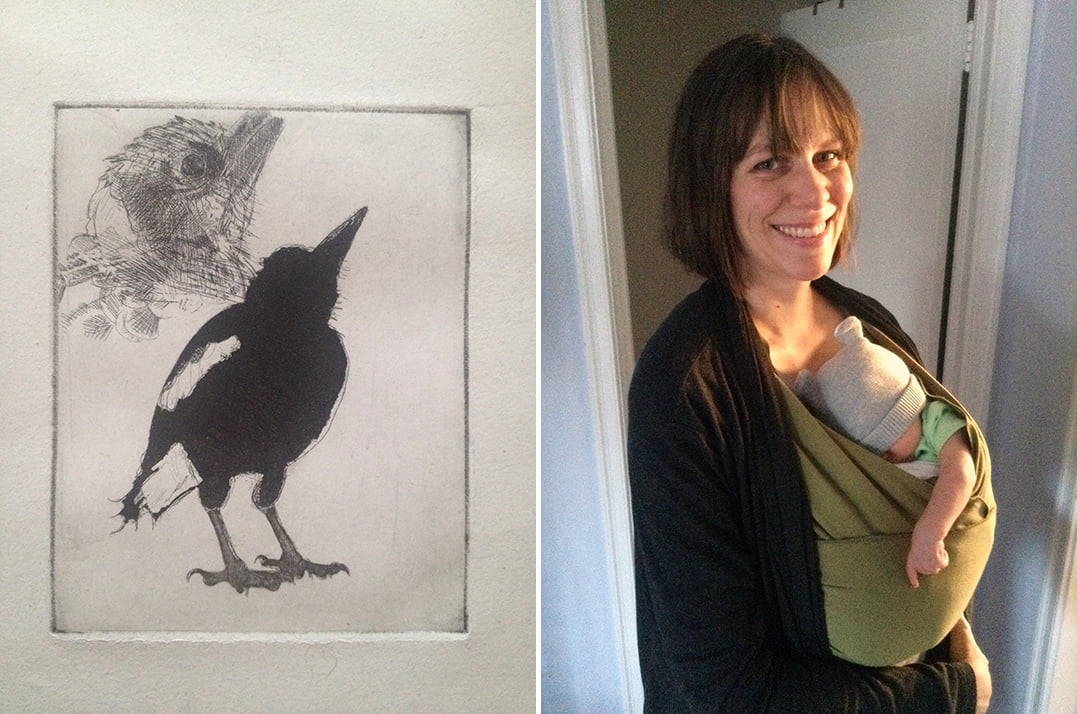
Stephanie Gehring Ladd, a doctoral student in Religion at Duke’s Graduate School, received a grant to take a printmaking course at the University of North Carolina in Chapel Hill and to spend time in a Durham printmaking studio. Her aim was to gain insight into the process of intaglio printmaking in order to enhance her observational powers in writing about prints and inform her dissertation on attention to suffering in the work of Simone Weil and Käthe Kollwitz.
Ladd was among 19 graduate students from five schools at Duke who received Graduate Student Training Enhancement Grants in 2016 for training beyond their core disciplines. Her faculty mentor was Paul J. Griffiths. She shared this update.
I took a printmaking course at UNC this fall, and Professor Brian Garner was fantastic to work with. He let me custom-tailor a course within his Introduction to Intaglio, so that I was able to focus on the intaglio printmaking techniques most used by the artist I am studying, Käthe Kollwitz. She mainly did copper etching, with a shading technique called aquatint, and I produced one small print (it’s a long process!) using copperplate etching and aquatint.
I learned an enormous amount about how her work was done—the main striking thing about etching is that it is a process that goes backwards, compared to drawing. In a drawing, you put down your lightest lines first, and then darken as you want to in the places where you’d prefer it to be darker. But in intaglio, once a piece of the plate is “open” (i.e., the protective ground is removed so that it can be etched, either by scratching or scraping or by washing off the ground), it is difficult to cover it back up in a precise way. This means that the first lines one puts in end up being the ones that get etched over and over in each round; therefore, they are the darkest. So instead of the first lines ending up being the lightest lines, the first ones are the darkest.
While intaglio prints can look a great deal like pen and ink drawings, they require enormously more planning in order to execute. The “fresh from the artist’s pen” look that they can have is, therefore, quite deceptive. It’s been a great gift having the GSTEG grant.
This internal funding mechanism from the Office of the Vice Provost for Interdisciplinary Studies encourages graduate students to step away from their core research and training to acquire additional skills, knowledge or co-curricular experiences that will give them new perspectives on their research agendas. Graduate Student Training Enhancement Grants are intended to deepen preparation for academic positions and other career trajectories.
Read about other 2016-2017 recipients’ experiences:
- Nanotechnology at Los Alamos
- Christian Engagement with Architecture
- Singapore’s Urbanization
- Brazilian Governance
- Capitalism, Slavery and Freedom
Image: Copper intaglio print by Stephanie Gehring Ladd; Stephanie with her baby
[“Source-ndtv”]




